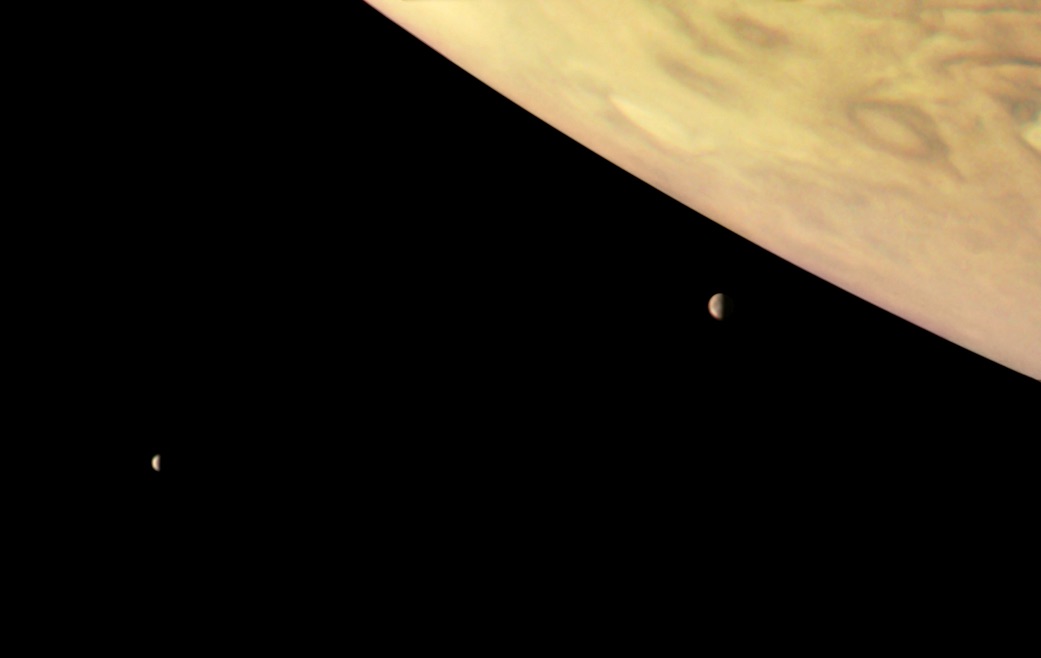Jupiter and Two of Its Biggest Moons Loom in Stunning Juno Photo

Two of Jupiter's largest and most intriguing moons hover near the giant planet in a striking photo snapped by NASA's Juno spacecraft.
The color-enhanced image — which Juno captured on Sept. 1, 2017, during its most recent close flyby of Jupiter — shows the 2,260-mile-wide (3,640 kilometers) moon Io hugging the gas giant's limb and the 1,900-mile-wide (3,100 km) Europa a bit farther out. NASA released the image on Friday (Oct. 6).
Io and Europa are two of Jupiter's four Galilean moons, which are so named because famed Italian astronomer Galileo Galilei discovered them back in 1610. (The other two Galilean satellites are Callisto and Ganymede.) Io is the most volcanic object in the solar system, and astrobiologists regard the ocean-harboring Europa as one of the best bets to host life beyond Earth. [More Amazing Jupiter Photos by Juno Citizen Scientists]
Juno was 17,098 miles (27,516 km) from Jupiter's cloud tops, at about 49.4 degrees south latitude when it took the image, NASA officials said.
Citizen scientist Roman Tkachenko processed the photo using raw data collected by Juno's JunoCam imager. Mission team members encourage anyone to do such work. If you're interested, go to the JunoCam page at www.missionjuno.swri.edu/junocam.
The $1.1 billion Juno mission launched in August 2011 and arrived in orbit around Jupiter on July 4, 2016. The spacecraft is studying the planet's composition and structure, as well as its gravitational and magnetic fields. Juno gathers most of its data during close flybys like the Sept. 1 encounter, which occur every 53.5 Earth days. (The spacecraft is looping around Jupiter in a highly elliptical orbit.)
Juno's observations should help researchers better understand how Jupiter, and the solar system itself, formed and evolved, mission team members have said.
Breaking space news, the latest updates on rocket launches, skywatching events and more!
Follow Mike Wall on Twitter @michaeldwall and Google+. Follow us @Spacedotcom, Facebook or Google+. Originally published on Space.com.

Michael Wall is a Senior Space Writer with Space.com and joined the team in 2010. He primarily covers exoplanets, spaceflight and military space, but has been known to dabble in the space art beat. His book about the search for alien life, "Out There," was published on Nov. 13, 2018. Before becoming a science writer, Michael worked as a herpetologist and wildlife biologist. He has a Ph.D. in evolutionary biology from the University of Sydney, Australia, a bachelor's degree from the University of Arizona, and a graduate certificate in science writing from the University of California, Santa Cruz. To find out what his latest project is, you can follow Michael on Twitter.
